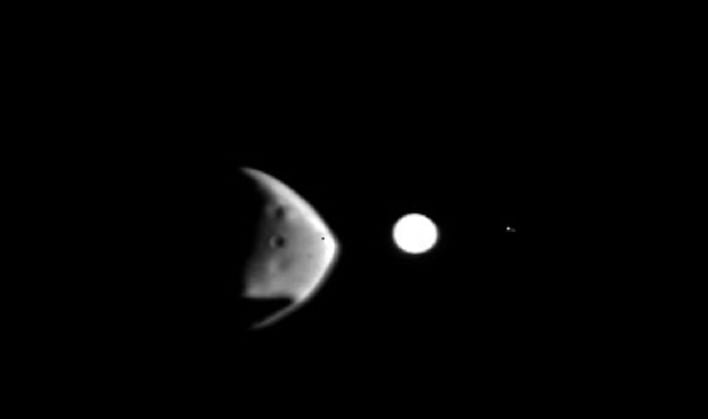Watch The Rare Moment A Martian Moon Passes Gas Giant Jupiter In A Deep Space Eclipse
Since launching in 2003, Mars Express has been able to create the most complete map of the chemical composition of Mars' atmosphere, and detailed the history of water across the planet. The data and imagery it has provided has led many to believe the Red Planet may have once been suitable for life. However, it was a recent celestial event the spacecraft captured that has left many in awe.
Along with Mars itself, Mars Express also monitors the planet's two moons, Phobos and Deimos. Due to strong tidal forces, the orbital path of the two moons is in constant fluctuation. While Deimos is moving away from Mars, Phobos is orbiting at a very close distance. It was the orbital path of Deimos, however, that provided incredible footage when it passed in front of Jupiter and four of its moons on February 14, 2022.
The astonishing footage first captures Deimos as it passes in front of Jupiter's icy moon Europa. Ganymede is then obscured, followed by Jupiter, which appears as a large white spot in the center of the frame. The next to disappear behind Deimos is the active volcanic moon lo, and then finally Callisto disappears behind Deimos to finish out the celestial crossing of paths.

The upcoming ESA-led JUpiter ICy moons Explorer (Juice) mission is scheduled to launch in 2023. It is expected to arrive in the Jupiter system sometime in 2031. The mission is aimed at providing more information about Jupiter's moons Ganymede, Callisto and Europa. These moons are believed to harbor oceans, and scientists want to study the conditions for the emergence of life in our Solar System, as well as how planets are formed.

